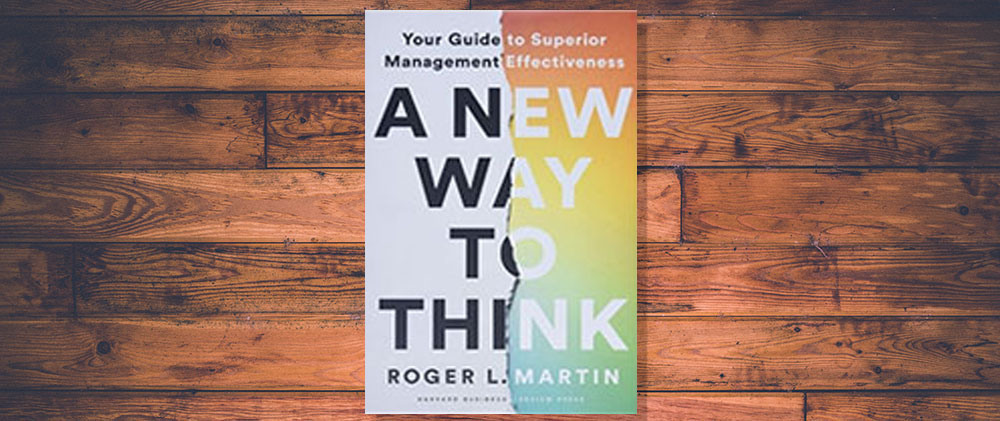We are Roger Martin fans. His practical real-world approach to strategy is an excellent antidote to some of the wishful narrations we see passed off as strategic plans.
So, a new Martin book is always worth a look. This article started as a book review. To short circuit that bit—yes, you should read this book. It does lean in part on updating previously published work but that doesn’t lessen its value. The book covers focusing on customer value before shareholder value, competition, keeping it simple, innovation, misuse of data, culture, knowledge work, talent, mergers and acquisitions, and capital investment.
But our attention was drawn to the sections on strategy, planning, execution and the use of models. So, this is less of a review and more of an exploration of those parts of the book.
One of Martin’s primary concepts is that competition does not occur between organisations. It is something that happens around individual customers at the front line. This world view upends many of the traditional assumptions about mission, strategy and decision making. Hence if you want to create shareholder value, you focus on customer value first. He cites Peter Drucker’s observation that the primary purpose of a business is to acquire and keep customers and notes that, ‘a single-minded focus on profits won’t get them’. Long-time collaborator AG Lafley [1] came to realise that gains in shareholder value were largely unrelated to business performance but had more to do with ‘the fertile imaginations of shareholders’ speculating on the company’s future’.
Offering the easy choice
Martin argues that sustained performance is achieved not by always offering customers the perfect choice but by offering the easy one. Martin and Kahneman [2] agree that the human mind is prone to laziness. For fast (lazy) thinkers, products that are easy to access and build on comfortable buying habits will win out over innovative alternatives that require forming new habits. ‘Improved’ is apparently less scary than ‘new’. The logic that flows from this is to innovate as far as possible within an existing brand.
Martin’s great truth is that strategy is about choice—valid choice between two or more alternatives. Here he gives us an extended scientific definition: ‘developing a winning strategy involves the creation of and testing of novel cause-effect hypotheses and the identification of what must be different about the world for those hypotheses to be true’. Strategists need to define two mutually exclusive options that could resolve the issue in question.
In other writing, he has criticised false choice. Being customer-centric is not a strategic choice unless its opposite is a valid option. Here he suggests that constructing strategic options, especially new ones, is the ultimate creative act in business. Teams should spin up three to five options in depth, including the status quo among the options. At this stage, the process is not about seeking evidence but asking what would need to be true for this option to be valid. This leads to seeking the right questions rather than leaping to the right answers.
We have endless data at our fingertips, but Martin cautions us on over-reliance—‘the behaviours of customers will never be transformed by a product whose design is based on an analysis of their past behaviour’—and points out that data is not logic. Customers are persuaded by compelling narratives. Science is relevant but it has limits. The trick is working out where the boundary is. The principles of story-making differ from those of natural science. The story can describe a world that does not currently exist. He even cites Aristotle’s The Art of Rhetoric and the three drivers of a system of persuasion: Ethos (credibility and authenticity), Logos (logical structure of the argument) and Pathos (the capacity to empathise).
In this book, Martin is particularly scornful of planning. Not because planning is bad and unnecessary, but because of its conflation with strategy. Planning is a comfortable place; it helps deal with the unknown. But he suggests that fear and discomfort are essential components of a good strategy process. Indeed, if you are comfortable with your strategic plan then, ‘it probably isn’t any good’. Planning is not about choice or what not to do. It doesn’t challenge assumptions. Planning is often about cost because that is something that can be controlled. Costs can be planned with accuracy—and a failure to do so can destroy companies. But revenue is controlled by customers. Planning cannot make revenue magically appear. That can only be done by acquiring and retaining customers.
Beware fast followers
Martin takes aim at the ‘fast follower’ approach to strategy—very relevant in today’s world where some believe that, as our current times are especially turbulent, strategy should emerge as events unfold. This is a misinterpretation of Mintzberg’s [3] distinction between deliberate and emergent strategy. His thesis is that strategy is mutable as the environment changes, not that strategy is to be made on the fly. As Martin notes, ‘simply following competitors’ choices will never produce a unique or valuable advantage’. Strategy is not about perfection.
Improving the efficacy of strategic choice requires being clear about the logic behind your thinking and then testing it as it connects with the real world. If it is not achieving the desired results, then adjust as necessary—just as Mintzberg suggests.
Strategy is designed to provide revenue from customers. Planning, focus on costs, developing capabilities will determine if the revenue secured will be at a level profitable for the company.
Cascading choices
The penultimate observation from the book we want to highlight is the false separation of strategy and execution. In a recent blog post, [4] Martin notes that the strategists stand ready to blame the dull-witted operating people for not implementing their strategic brilliance.
This idea of separation has become rooted in management thinking, and the doctrine is as flawed as it is popular. Within this framework, frontline workers are in a lose-lose game—little credit if things go well and lots of blame if the strategy doesn’t pan out. He offers instead the idea of a choice cascade. The choices made at a senior level give rise to a multitude of choices down the line. Rather than offering a rigid mechanical model, each choice maker in a descending cascade should set a context for the next level of choice, empowering people to make decisions within their sphere. This ultimately makes for happy customers and more satisfied workers.
We are not surprised that this sounds rather like the policy-driven approach to governance we have long recommended. The board sets outcomes to be achieved (ends) and conditions to avoid (limitations), leaving management with freedom of choice among strategic options, and tactical implementation.
Choosing between valid options
And finally, a warning on the use of models. Here Martin uses models in a broad sense, ‘any given framework, general practice, theory, or way of thinking’. He certainly favours using models because it is easier and quicker but cautions on inflexibility, observing that across his forty years of experience ‘poor results weren’t down to their not working diligently enough in pursuit of their goals; it was because the model that guided their actions wasn’t up to the task’.
Special caution is offered around innovation: ‘no new idea in the history of the world has been proven in advance analytically, which means that if you insist on rigorous proof of the merits of an idea during its development, you will kill it if it is truly a breakthrough idea’.
We have focused on the book’s discussion of strategy but the rest of it is just as insightful, especially the section on managing the truly talented—something that is increasingly challenging in what is becoming known as ‘the war for talent’.
If you take just one thing from Roger Martin, it is that strategy is choosing between valid options. Also, perhaps, that it should not be a comfortable process.
Notes
- Co-author of Playing to Win and former CEO of Proctor and Gamble
- See Daniel Kahneman. Thinking Fast and Slow. Farrar, Straus and Giroux 2011
- Henry Mintzberg. Canadian academic, author and prominent strategic thinker.
- What Makes a Great Strategist? 16 August 2022








